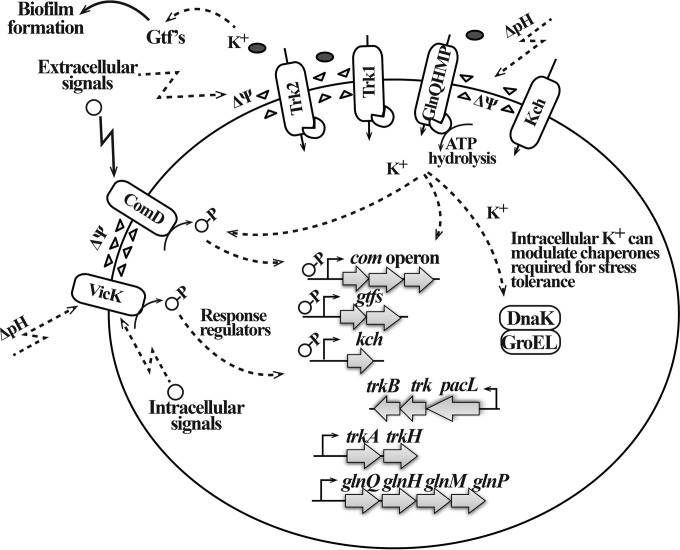FIG 11.
Representation of regulatory mechanisms in S. mutans that include K+ transport systems in physiological responses. Environment changes, including changes in pH and concentration of cations, result in alterations of the membrane physiology, which is sensed by specialized sensing mechanisms. Activation of K+ accumulation is one way to respond to environmental stress, and high intracellular K+ concentrations can affect the overall physiological responses of cells by bolstering their defense and repair mechanisms. K+ levels affect function of important enzymes such as glucosyltransferase, thereby regulating the ability of S. mutans to form a biofilm. Although the underlying regulatory mechanism remains to be identified, it is possible that during periods of high K+ demand, such as under intracellular-K+-deficient or highly acidic conditions, the membrane proteins (e.g., transport systems) and membrane-bound sensors (e.g., histidine kinases) can respond in a feedback-regulated manner by increasing the inflow of cations (e.g., K+) through the specific K+ transport systems.

